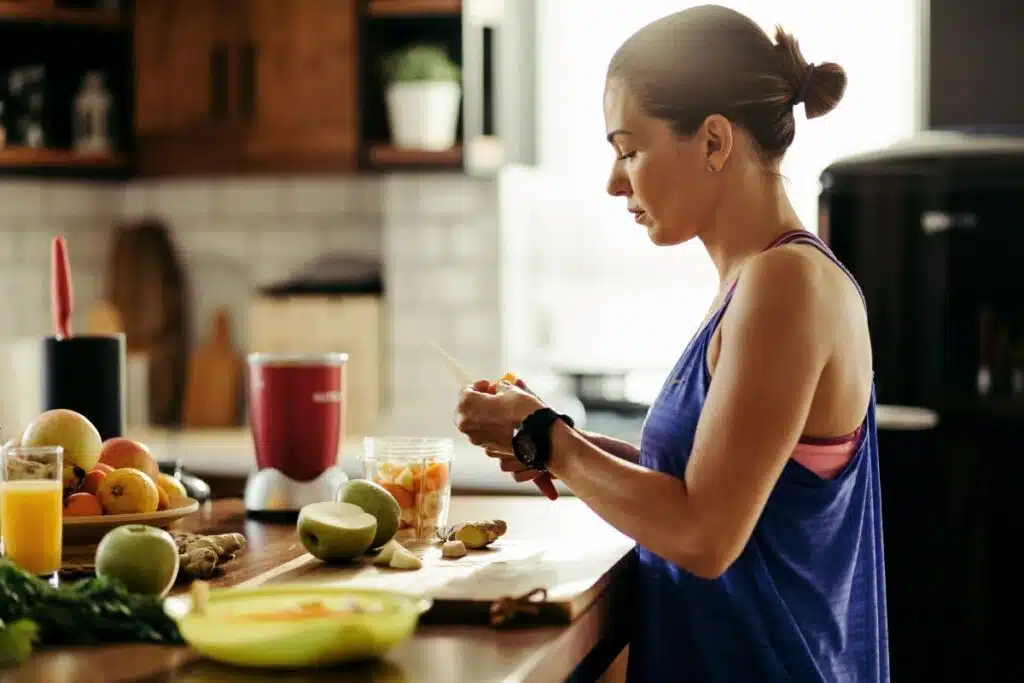Choosing the Best Juicer: A Guide for Health Enthusiasts
By Meryl Ignaschenko
The concept of juicing is hardly new and for a period of time it seemed like the trendiest thing around. You probably most recently heard the buzz about the Medical Medium’s influence with juicing celery.
If you’re new to the concept of juicing, let’s do a quick primer. Consuming fruit and vegetable juices is a great way to get higher volumes of fruit and vegetables into your daily diet. By extracting just the juice – with its polyphenols, antioxidants, vitamins, and minerals—and eliminating the fiber (more on that later)—you are able to consume a much greater volume of the good things mentioned above – vitamins, antioxidants, and the like. For example, a super high grade cold-pressed juicer (one that a cold-pressed juice shop would use) gets up to about 6 to 7 lbs of produce into a 16 oz (2 cups) bottle of juice. Imagine sitting and trying to eat 6 lbs of spinach. That’s like over 30 carrots!
That being said, it’s important that juice is not the only way you get your fruit and veggie intake. Fiber is extremely important. Fiber has been shown to combat everything from cardiovascular disease to certain cancers and it supports a healthy microbiome. Some people, especially those with digestive problems such as IBS can struggle with digesting fiber, however, if you can, it may help with satiety.
While it’s easy to pop into a store and grab a juice, there are arguments for making them at home. You get to play with flavors and tailor what produce you use exactly to your needs. You also know where the produce is coming from and its quality.
A recent study looked at juice made from a centrifugal juicer (the kind with blades that induce heat unto the produce) and cold-pressed juicers (no heat is applied to the produce) and looked at which extracted more nutrients. They found that there was no major difference of antioxidant content and other health-promoting capabilities between the two types of juice.
There are also masticating juicers, which are similar to centrifugal juicers, but they grind the produce (imagine a meat grinder) instead of splicing it with blades.
I have found that the best home juicers are the ones that are either cold-pressed or slow/masticating. These consistently result in the highest quality juice (for flavor and texture). With the exception of the Norwalk, they tend to be the most user friendly, quietest, and compact.
The Norwalk is the primo cold-pressed juicer (belongs in Goop’s gift guide for the one who has everything). If you’re really committed to having a cold-pressed juicer at home and money is no object, this is the OG of cold-pressed juicers. It is incredibly time intensive (requires a 2 step process for making juice). Your produce will never heat up and it extracts absolutely every last drop of juice. The fiber leftover is akin to felt.
If that seems like a lot, the next best product on the market is the Angel. Like the Norwalk the Angel is stainless steel – ideal for those who are committed to keeping things plastic-free. It also means it is quite heavy. The angel is less expensive and more compact than the Norwalk. It also makes your juice in a single process, which means less work for you.
This Omega juicer is a slow masticating juicer. It has a very large spout where the fruit and vegetables are fed into, which means less chopping and slicing in advance.
If you prefer a vertical juicer, this Hurom model is incredibly compact. It is also a slow juicer. The juicer itself only consists of 4 parts. It is very easy to assemble and take apart to clean. Another perk of this juicer is that it makes very little noise – which means it’s easy to use without bothering anyone in the kitchen. The juice has excellent texture and viscosity.
While most juicers make claims that they can be used for nut butter and nut milk use, I’d recommend a blender and focus on your juicer for making juice.
The best tip for buying a juicer is buying the one that speaks to you and that you will actually use. If you know you don’t have much storage space, opt for a smaller model. What’s most important is not to get too hung up on what is the best. Once you get started you will have fun playing around with different fruits and vegetables. Juices don’t really have recipes and are very hard to mess up. Some pro tips – squeeze lemon in at the end to boost your Vitamin C or opt for lime which is actually much sweeter than lemon.







